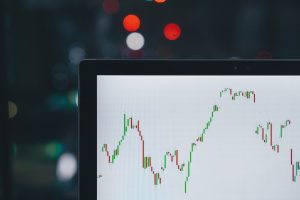Forex trading is a popular form of investment where traders buy and sell currencies with the aim of making a profit. One of the key tools used by forex traders is technical indicators, which are mathematical calculations based on price and/or volume data. These indicators are used to analyze the market and identify potential trading opportunities. However, with so many indicators available, it can be difficult to determine which one is the best for forex trading. In this article, we will discuss some of the most popular forex indicators and their pros and cons.
Moving Averages
Moving averages are one of the most popular and widely used indicators in forex trading. They are used to smooth out price data and help traders identify trends. Moving averages are calculated by taking the average price of a currency pair over a certain period of time. For example, a 50-day moving average would take the average price of the currency pair over the past 50 days.
Pros: Moving averages are easy to use and understand. They can help traders identify trends and potential trading opportunities.
Cons: Moving averages are lagging indicators, meaning they are based on past prices and may not accurately predict future prices. They can also be affected by market volatility and may give false signals.
Relative Strength Index (RSI)
The Relative Strength Index (RSI) is another popular indicator used in forex trading. It measures the strength of a currency pair’s price action by comparing the average gain to the average loss over a certain period of time. The RSI is plotted on a scale from 0 to 100, with 70 and above indicating overbought conditions and 30 and below indicating oversold conditions.
Pros: The RSI is a good indicator of market momentum and can help traders identify when a currency pair is overbought or oversold. It can also be used to confirm trends and potential trading opportunities.
Cons: The RSI can be affected by sudden market movements and may give false signals. It is also a lagging indicator and may not accurately predict future prices.
Bollinger Bands
Bollinger Bands are another popular forex indicator used by traders. They consist of three lines: a moving average in the middle and two bands above and below the moving average, which are based on the standard deviation of the price from the moving average. Bollinger Bands are used to measure volatility and identify potential trading opportunities.
Pros: Bollinger Bands can help traders identify when a currency pair is overbought or oversold. They can also be used to identify potential breakouts and trend reversals.
Cons: Bollinger Bands can be affected by sudden market movements and may give false signals. They are also lagging indicators and may not accurately predict future prices.
Ichimoku Cloud
The Ichimoku Cloud is a complex forex indicator that consists of multiple lines and data points. It is used to identify trends and potential trading opportunities. The Ichimoku Cloud is made up of five lines: the Tenkan-sen (fast moving average), the Kijun-sen (slow moving average), the Chikou span (lagging indicator), the Senkou span A (leading indicator), and the Senkou span B (leading indicator).
Pros: The Ichimoku Cloud is a comprehensive indicator that can help traders identify trends and potential trading opportunities. It is also easy to use and understand once traders learn how to interpret the lines.
Cons: The Ichimoku Cloud is a complex indicator that can be difficult for beginners to understand. It can also be affected by sudden market movements and may give false signals.
Conclusion
In conclusion, there is no one-size-fits-all answer to the question of which indicator is best for forex trading. Each indicator has its pros and cons, and traders should choose the one that best fits their trading style and strategy. Moving averages are a good starting point for beginners, while more experienced traders may prefer the RSI, Bollinger Bands, or Ichimoku Cloud. Ultimately, the key to successful forex trading is to use indicators in conjunction with other tools and analysis methods to make informed decisions.






